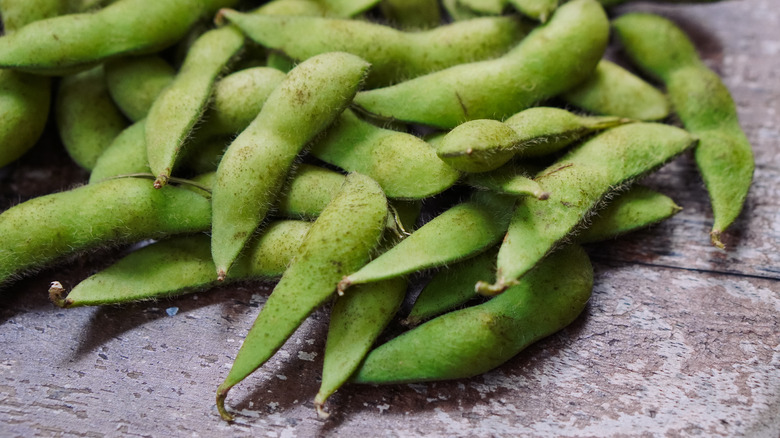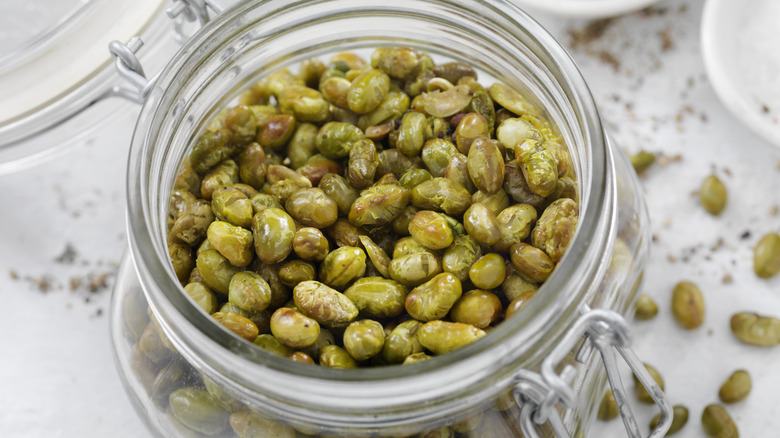Can You Eat Edamame Pods?
The term edamame refers to the immature green soybeans known to make a welcome appearance in any sushi dish worth raving about. Because of their versatility, edamame have found their way into restaurants, stores, and must-have snacks all over the world. In their unripe form, edamame are high-protein snacks that can be enjoyed simply as-is or adorned by all-time favorite flavors such as soy sauce. Considering the growing appreciation for edamame, it's worth knowing exactly how to properly and safely enjoy the baby soybean delights — and while edamame is often sold in pod-form, the tough, fuzzy outer pod is not actually meant for consumption.
Within each pod lies roughly 2 to 5 beans waiting to be whipped off the plate between chopsticks and savored. If you're cooking with the entire edamame pods, it is recommended to boil them down for at least 20 minutes or steam them. Cooking edamame is vital because the immature beans are not safe to be eaten raw. Since the pods themselves are not edible whether raw or cooked, the beans are removed from the pods after cooking to be enjoyed as appetizers or included in rice bowls. Even though the pods are not encouraged to be ingested, it's important to note that the they are non-toxic. However, they would be extremely hard to chew and likely become a nightmare for your digestive tract.
How to eat edamame
Shelled or unshelled, mashed or salted, there are several ways to get excited about eating your edamame. If you've never tried the tasty snack, the first thing to know is that the beans bring a freshness to your dish that complements many recipes. The legumes are famed for their creaminess and their taste faintly resembles that of lima beans.
If you've come across edamame still in the pods at your favorite Asian restaurant, then you probably know the procedure of popping each bean out of the pod with your fingers or teeth. Loose beans can be just as fun to experiment with and can be incorporated into your favorite stir-fry rice meals. It's also possible to enjoy the beans warm or chilled. Chilled beans are cooked and cooled, then often tossed into salads or side dishes.
Consider mashing your cooked edamame into a dip, puree, or a salsa to ramp up the flavors of your main meal. If you're a pesto-lover, edamame makes for an exquisite ingredient to add into a sauce made from scratch. Create something beyond the basic (and beloved) basil pesto paste with an innovative remake that highlights edamame as the key flavor.


